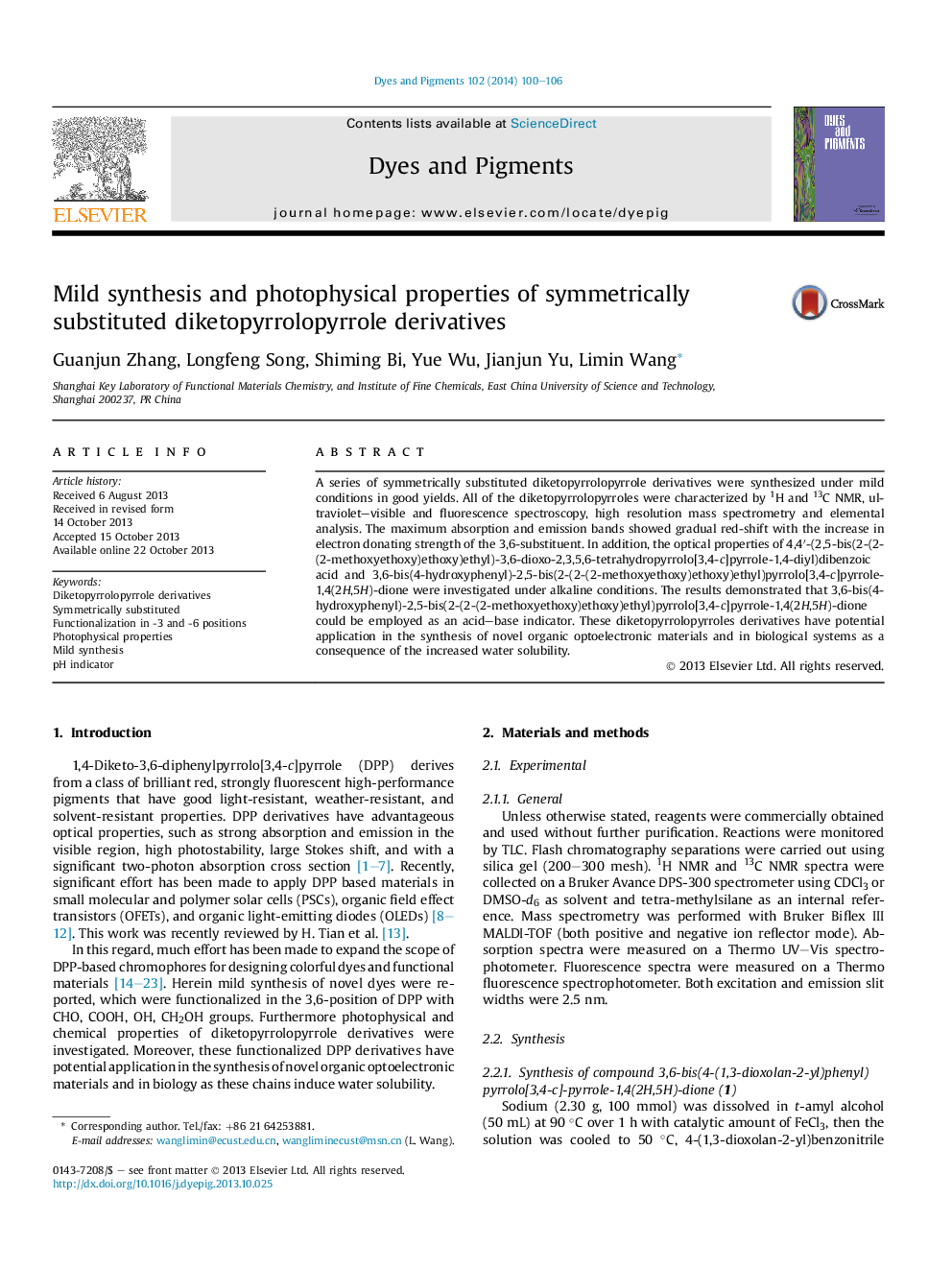| Article ID | Journal | Published Year | Pages | File Type |
|---|---|---|---|---|
| 176173 | Dyes and Pigments | 2014 | 7 Pages |
•A series of functionalized diketopyrrolopyrrole were designed and synthesized.•A novel route was presented to adding OH group to diketopyrrolopyrrole.•The absorption and emission show gradual red-shift with electron-donation increase.•The diketopyrrolopyrroles have potential application in the synthesis of novel organic functional materials.•Increase of water-solubility by addition of oligoethyleneglycol chains opened the way to biological science.
A series of symmetrically substituted diketopyrrolopyrrole derivatives were synthesized under mild conditions in good yields. All of the diketopyrrolopyrroles were characterized by 1H and 13C NMR, ultraviolet–visible and fluorescence spectroscopy, high resolution mass spectrometry and elemental analysis. The maximum absorption and emission bands showed gradual red-shift with the increase in electron donating strength of the 3,6-substituent. In addition, the optical properties of 4,4′-(2,5-bis(2-(2-(2-methoxyethoxy)ethoxy)ethyl)-3,6-dioxo-2,3,5,6-tetrahydropyrrolo[3,4-c]pyrrole-1,4-diyl)dibenzoic acid and 3,6-bis(4-hydroxyphenyl)-2,5-bis(2-(2-(2-methoxyethoxy)ethoxy)ethyl)pyrrolo[3,4-c]pyrrole-1,4(2H,5H)-dione were investigated under alkaline conditions. The results demonstrated that 3,6-bis(4-hydroxyphenyl)-2,5-bis(2-(2-(2-methoxyethoxy)ethoxy)ethyl)pyrrolo[3,4-c]pyrrole-1,4(2H,5H)-dione could be employed as an acid–base indicator. These diketopyrrolopyrroles derivatives have potential application in the synthesis of novel organic optoelectronic materials and in biological systems as a consequence of the increased water solubility.
Graphical abstractFigure optionsDownload full-size imageDownload as PowerPoint slide
